Enhancing greenhouse cucumber production and quality utilizing organic residues as potting media through various cultivation modes and assessing application economics
- PMID: 40542076
- PMCID: PMC12181275
- DOI: 10.1038/s41598-025-05242-3
Enhancing greenhouse cucumber production and quality utilizing organic residues as potting media through various cultivation modes and assessing application economics
Abstract
Cocopeat is among the most frequently utilized substrates in soilless farming. Nonetheless, the extraction of Cocopeat generates a detrimental carbon footprint, highlighting the necessity for alternative, sustainable substrate options. To tackle this issue, we examined the effects of substituting Cocopeat with a blend of various Rice straw, Sawdust, and compost on cucumber growth and yield over two growing seasons, 2021-2022 and 2022-2023. The treatments included Cocopeat 100% (control), sawdust 100%, rice straw 100%, compost 100%, combinations of Cocopeat and sawdust (1:1, v/v), combinations of Cocopeat and sawdust (3:1, v/v), combinations of Cocopeat and rice straw (1:1, v/v), combinations of Cocopeat and rice straw (3:1, v/v), combinations of Cocopeat and compost (1:1, v/v), and combinations of Cocopeat and compost (3:1, v/v). The highest yield was recorded with rice straw at 100.55 ton ha- 1, followed by the Coco 50%: Compost 50% treatment yielding 74.32 ton ha-1 and 69.26 ton ha- 1, respectively, while the lowest yield was noted for sawdust at 22.23 ton ha- 1. Across both growth seasons, rice straw achieved the highest irrigation water productivity (IWP) of 51.56 and 51.91 kg m- 3, respectively, followed by Coco 50%: Rice straw 50% at 38.08 and 38.37 kg m- 3, whereas sawdust resulted in the lowest IWPs of 6.93 and 11.48 kg m- 3. In both growing seasons, the rice straw showed the greatest rate of photosynthesis, with readings of 23.34 µmol m-2 s-1 and 22.14 µmol m-2 s-1, respectively. Conversely, the lowest photosynthesis rates during both growing seasons were observed with the Coco 75%: Compost 25% treatment, at 3.23 µmol m-2 s-1 and 3.03 µmol m-2 s-1, respectively. The treated rice straw substrate media ranked as the most profitable and resilient option in terms of net present value (NPV) and benefit-cost (B/C) ratio metrics, followed closely by the compost treatment. It seems that treated rice straw-based media is a promising substrate in soilless culture systems as a viable alternative substrate for cucumber cultivation instead of Cocopeat substrate.
Keywords: Cucumber; Fruit quality; Growth; Irrigation water productivity; Photosynthesis; Substrate media culture.
© 2025. The Author(s).
Conflict of interest statement
Declarations. Ethics approval and consent to participate: All authors gave approval for their participation in this research. The research does not include any experiments on living organisms or experiments on humans that warrant the Ethics Committee and the Ethical Approval Number. Competing interests: The authors declare no competing interests.
Figures
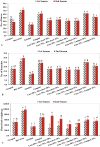




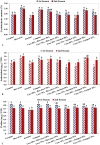
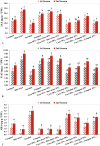
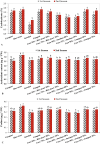


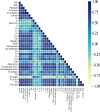
Similar articles
-
Optimization of Compost and Peat Mixture Ratios for Production of Pepper Seedlings.Int J Mol Sci. 2025 Jan 7;26(2):442. doi: 10.3390/ijms26020442. Int J Mol Sci. 2025. PMID: 39859158 Free PMC article.
-
Enhancing food security through reducing Champa rice losses: Assessing the impact of crop moisture and harvesting methods on yield quantity and quality.PLoS One. 2025 Jul 9;20(7):e0326846. doi: 10.1371/journal.pone.0326846. eCollection 2025. PLoS One. 2025. PMID: 40632782 Free PMC article.
-
Long-term conservation agriculture to enhance soil properties and quality in rice-wheat cropping system.Sci Rep. 2025 Aug 4;15(1):28393. doi: 10.1038/s41598-025-11104-9. Sci Rep. 2025. PMID: 40759683 Free PMC article.
-
Sertindole for schizophrenia.Cochrane Database Syst Rev. 2005 Jul 20;2005(3):CD001715. doi: 10.1002/14651858.CD001715.pub2. Cochrane Database Syst Rev. 2005. PMID: 16034864 Free PMC article.
-
Systemic pharmacological treatments for chronic plaque psoriasis: a network meta-analysis.Cochrane Database Syst Rev. 2017 Dec 22;12(12):CD011535. doi: 10.1002/14651858.CD011535.pub2. Cochrane Database Syst Rev. 2017. Update in: Cochrane Database Syst Rev. 2020 Jan 9;1:CD011535. doi: 10.1002/14651858.CD011535.pub3. PMID: 29271481 Free PMC article. Updated.
References
-
- Ali, A. et al. Hiseq base molecular characterization of soil microbial community, diversity structure, and predictive functional profiling in continuous cucumber planted soil affected by diverse cropping systems in an intensive greenhouse region of Northern China. Int. J. Mol. Sci.20 (11), 2619 (2019). - PMC - PubMed
-
- Liu, H. et al. Evaluation of cucumber yield, economic benefit and water productivity under different soil matric potentials in solar greenhouses in North China. Agric. Water Manag.243, 106442 (2021).
-
- Ali, A. et al. Co-amended synergistic interactions between arbuscular mycorrhizal fungi and the organic substrate-induced cucumber yield and fruit quality associated with the regulation of the AM-fungal community structure under anthropogenic cultivated soil. Int. J. Mol. Sci.20 (7), 1539 (2019). - PMC - PubMed
-
- Abdalla, N. et al. Management of heat stress in tomato seedlings under arid and semi-arid regions: a review. Environ. Biodivers. Soil. Secur.4 (2020), p47–58 (2020).
MeSH terms
Substances
LinkOut - more resources
Full Text Sources
Research Materials

